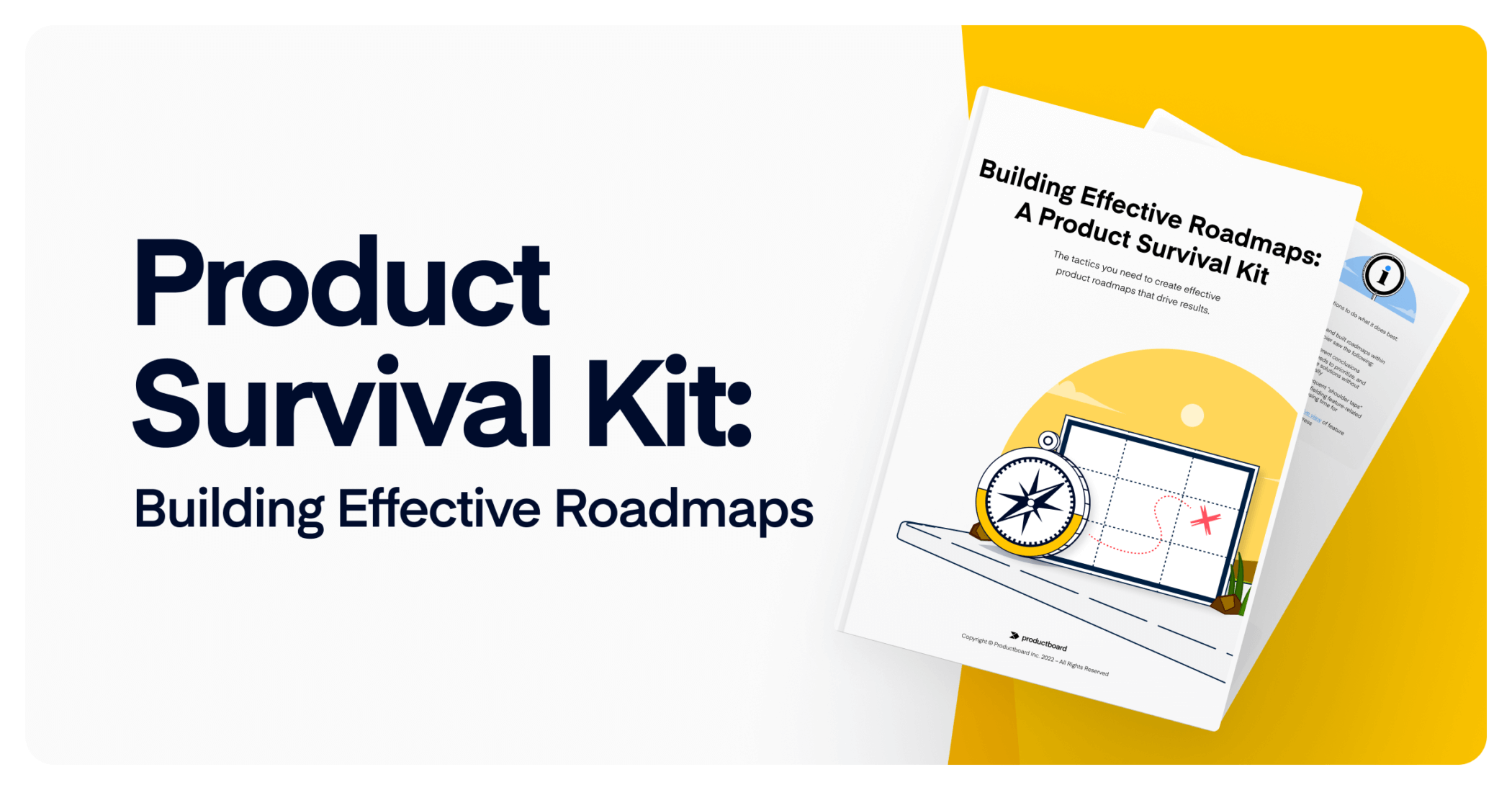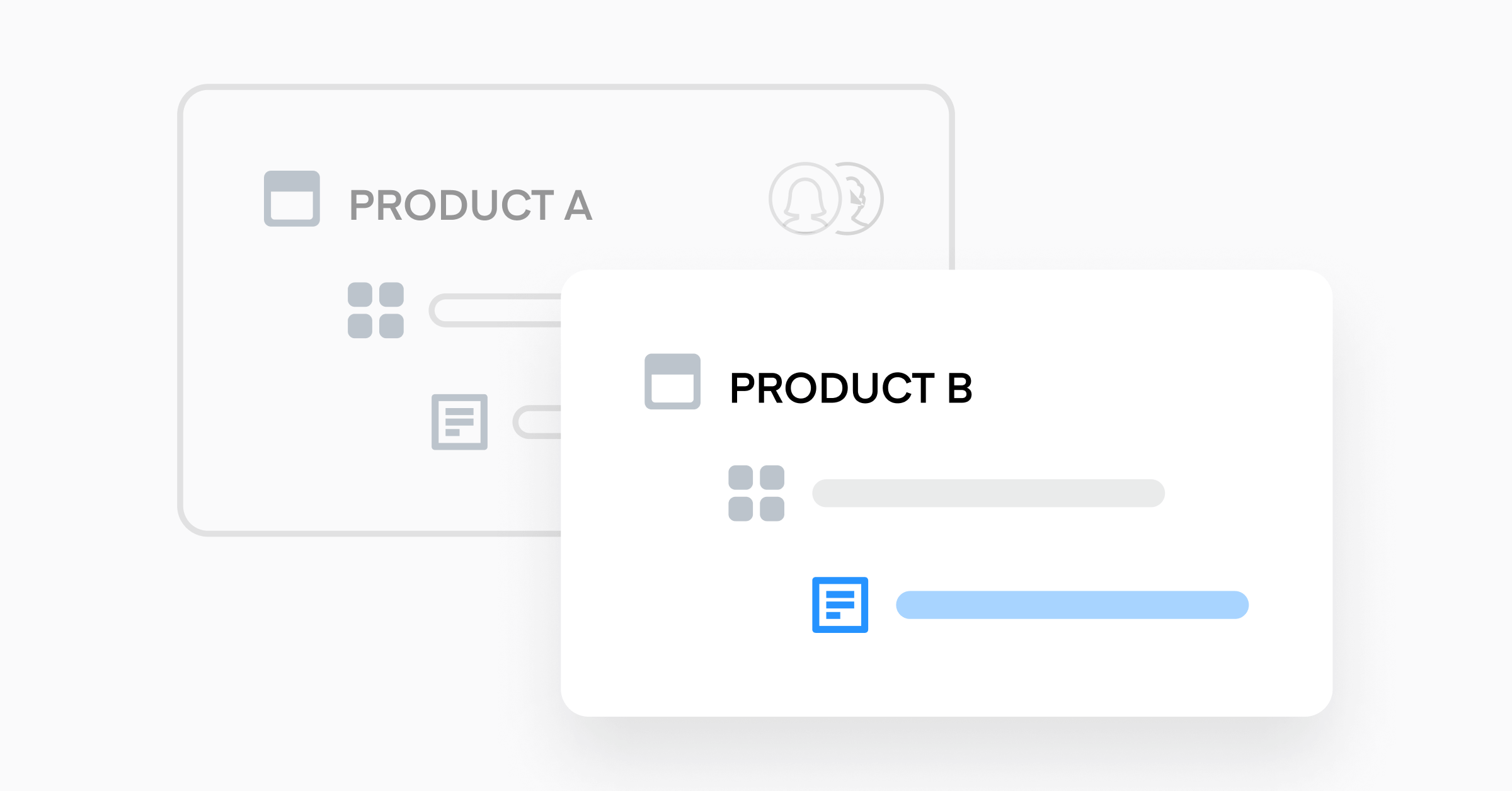3 tactics to drive results with your product roadmaps

The tactics you need to create effective product roadmaps that drive results
Getting a roadmap right is invaluable to any organization – it provides transparency into which areas will contribute to business goals and are worth focusing on, it saves time by allowing for asynchronous communication (making prioritization easier), and it gives a clear statement of intent and path forward for everyone.
This is especially important when the 2022 Product Excellence Report found that confidence in product roadmaps has fallen year-over-year, with only 41% of product professionals reporting that they’re successfully able to keep them up-to-date. Only 31% said roadmaps can be easily shared and accessed by cross-functional partners, leading to miscommunication, poor handoffs, and expensive delays in delivering the product outcomes your customers need.
With that in mind, we put together a Product Survival Kit for creating effective roadmaps, that breaks down:
- Where to begin building effective roadmaps (hint: it starts with outcomes and stakeholders)
- How to define your vision, strategy and objectives
- The process of building your roadmap
Want more? Find our Survival Kit on roadmap prioritization here.
Starting with outcomes and stakeholders
The most important question to answer first is: what are the outcomes you’re trying to achieve and who needs to be involved? Answer this before building out the details of timelines and features. Focus on outcomes – what it is that you’re trying to achieve – rather than outputs, or how you’ll get there.
Stakeholder buy-in is also key to roadmap success. Be sure you involve stakeholders early and often so they are clear on the direction the roadmap is taking the whole organization and they are able to give insight where needed (customer-facing team insights are especially valuable). Be sure roadmaps are communicated often and ideally have tailored versions available to different stakeholders.
Defining your vision, strategy, and objectives
The next step is to decide what it is you want to deliver to your customers in the long-term and have the product team work with executives to translate company vision and strategy into product vision and strategy. Once that is set, break everything down into objectives to address over different time frames in relation to key date-based milestones (i.e., the next funding round for your company).
Product objectives should be high level enough to represent a worthy outcome for your customers or product, yet specific enough to help guide prioritization decisions around which features to build next. You can approach these “top-down” from company objectives or “bottom-up” based on user insights you’ve received, market intelligence you’ve gathered, or your product strategy.
What’s a good objective? Try something like:
- Help users perform core job-to-be done X
- Close core feature gaps experienced by user role Y
- Expand customer base to Z new regions
Building your transparent roadmap
Now that it’s finally time to create a working draft of your roadmap, be sure it’s informative and easy to understand by its intended audience. Include:
- Timelines: make sure everyone understands that they’re not set in stone. Do yourself a favor and use general time frames like months or quarters, rather than specific dates.
- Solutions: what features are you including, and why? Be as high-level or detailed as you’d like, or consider different versions for different stakeholder audiences.
- Strategic context: all teams should know where the product is headed and why you’re building specific features next.
Need some examples? The Survival Kit has two examples and you can find seven more in this blog post.
Roadmap creation, in overdrive
Put all of these pieces together and you hopefully come up with a repeatable process that works for your product team and organization as a whole. Once you have that, you can put the pedal to the metal and get things in overdrive.




